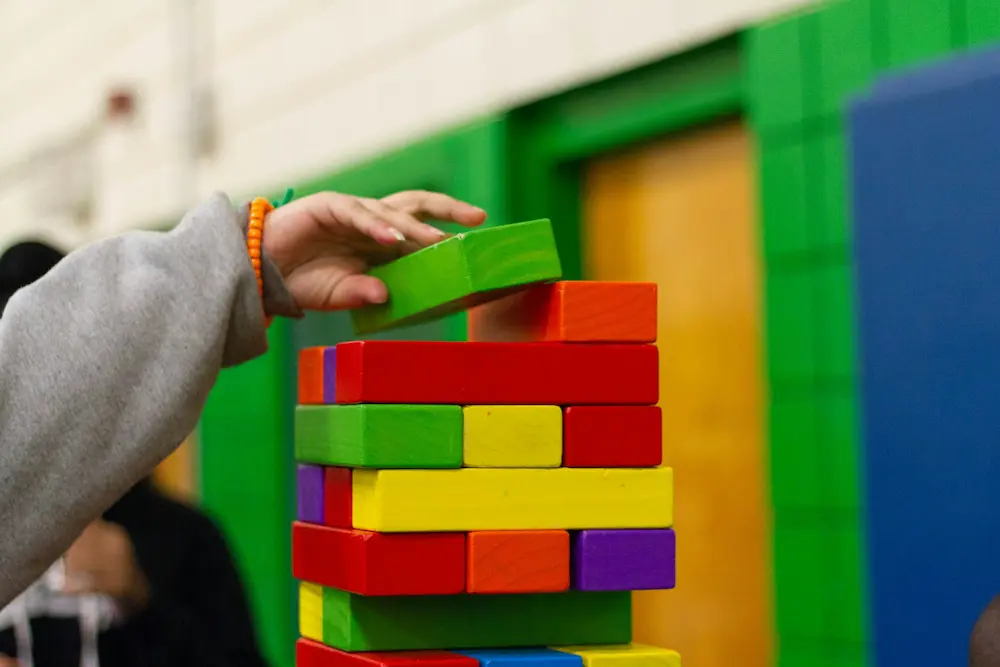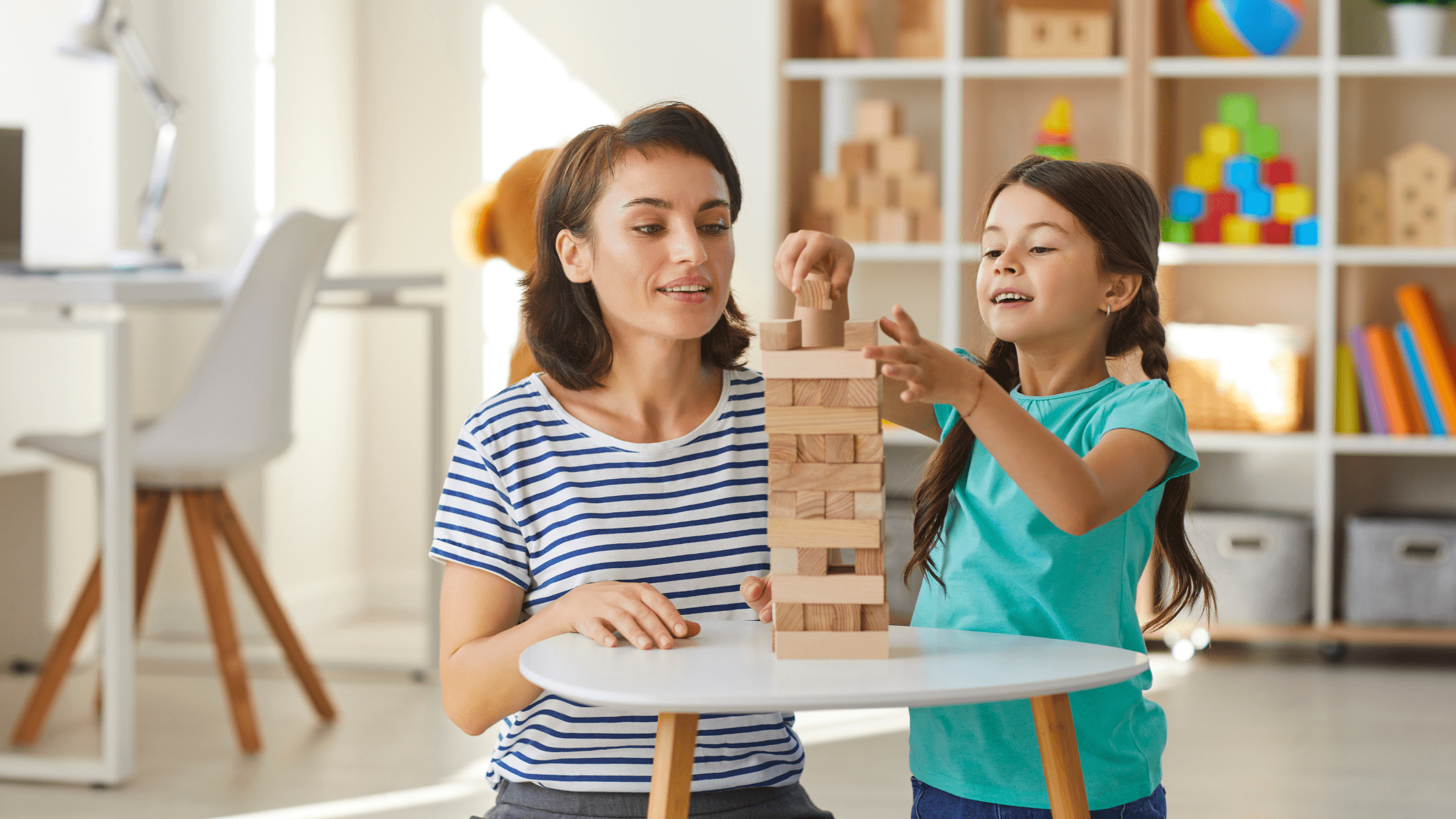Parallel play is a form of play that educators use to encourage early learners to engage with both their peers and various materials in their environment.
In parallel play, children play next to one another rather than directly interacting. This type of play serves several developmental purposes: promoting independence, enhancing social skills, and encouraging imagination.
Parallel play allows children to observe their peers, experiment with materials, and engage in self-directed play, all of which are crucial steps in their growth and development.
Parallel Play for Parents and Childcare Professionals: The Importance in Child Development
As an educator with over 12 years of experience working with children with special needs, I have seen the benefits of parallel play firsthand. I have worked in different environments, including homeschooling, public schools, and private autism centers.
In these settings, I have observed children who initially showed little interest in engaging with others—some of whom were nonverbal or displayed maladaptive behaviors—begin to initiate play and communicate. These interactions, often subtle, such as glancing at the peer next to them or reaching for a toy, are significant milestones in a child’s social development, especially when observing a child playing alongside others.
Looking for expert childcare? Let us match you with a qualified nanny.
What is Parallel Play?
Definition of Parallel Play
Parallel play is a type of play where children play next to each other, but not necessarily with each other. It is a stage of play that is characterized by children engaging in similar activities or using the same toys, but their focus remains on their own play. Parallel play is an important part of early childhood development, as it helps children develop social skills, such as imitation and curiosity, and lays the groundwork for future social and cooperative play experiences.
Examples of Parallel Play in Children
Examples of parallel play in children include playing with blocks or dolls next to each other, but not directly interacting with each other. Children may also engage in parallel play by playing with the same toy or activity, but not interacting with each other.
For instance, two children may be playing with a playdough at the same table, but each child is focused on their own creation.
Age Range for Parallel Play
Parallel play typically occurs in children between the ages of 2 and 3 years old. However, some children may start parallel playing as early as 18 months and continue this type of play up to 4 years of age. The age range for parallel play can vary based on individual development, environment, and exposure to peers.
Characteristics of Parallel Play
Independence and Confidence
Parallel play allows children to develop their independence and confidence. By playing next to each other, children can observe and learn from each other without feeling pressured to interact directly.
This type of play helps children develop problem-solving skills and encourages creativity as they are given the opportunity to come up with their own solutions to challenges they encounter during play.
Additionally, parallel play promotes physical development through hands-on play and helps children develop essential skills such as observational and social learning.
How to Facilitate Parallel Play
To facilitate parallel play, it is helpful to start with an engaging activity. Here are some examples of activities that work well:
- Sensory Bins: Set up a sensory bin filled with water and various floating objects. These bins can be filled with different materials like rice, beans, or water beads to encourage tactile exploration.
- Marble Towers: Create a marble tower for children to explore and manipulate. This type of activity is great for engaging multiple children in building and watching marbles move through the maze.
- Building Blocks: Provide different types of building blocks to allow children to create structures next to each other, which encourages observational learning.
- Art Supplies: Set up an art station with crayons, markers, and paper, allowing children to draw or color side by side without the pressure of direct interaction.
Parents can facilitate parallel play at home by creating a conducive environment and providing engaging activities that promote social and cognitive growth during playtime.
These types of activities are fun and motivating for children. When the activity is engaging enough, I notice that children tend to give more eye contact, their awareness of the surrounding environment increases, and they may even begin to babble or verbalize their thoughts and needs. Communication can be facilitated through different devices, such as PECS (Picture Exchange Communication System), or through spoken words.
Ready to give your child the best support? Connect with a professional nanny now.
The Role of Adults in Parallel Play
The adult’s role in parallel play is to help children with parallel play by facilitating and creating opportunities for exploration. Setting up motivating activities that spark curiosity is key.
Paying close attention to the children’s motivations and interests helps in designing the environment.
For instance, if children are interested in cars, I set up a play area with different types of toy cars—some that can be tinkered with, others of various colors and sizes, and some that move at different speeds.
If a child shows interest in dolls, I create a nurturing space with tools to care for a baby, such as bowls for feeding, spoons, and baby clothes for dressing. Tailoring the play environment to reflect the child’s interests promotes engagement and participation.
Modeling Play Actions
In addition to setting up activities, adults and childcare providers can model actions they want to see. When a child struggles to play, modeling these actions becomes even more crucial. For example:
- Introduce Sounds and Words: Introduce sounds and simple words during play to encourage imitation.
- Engage in Simple Activities: Stack blocks, open and close a book, or crash two toy cars together—all simple activities that can encourage children to engage.
- Observe Quietly: Sometimes, just sitting quietly and observing is equally important. This allows children to feel safe while they explore their play space.
Benefits of Parallel Play in Child
Parallel play has many benefits, including:
- Socialization: Children observe the activities around them, which helps them learn social skills and supports their cognitive growth.
- Imaginative Play: Children can engage all their senses—sight, touch, hearing, taste, and smell—depending on the activity. For example, playing with toy food items can stimulate imaginative scenarios involving taste and smell.
- Independent Play: Children learn to explore based on their own interests without the pressure of direct interaction.
- Sharing and Cooperation: Parallel play encourages children to share space and materials, which are essential components of cooperative play. This type of sharing builds foundational skills for future interactive play.
Children are encouraged to share space, which can teach important social skills, although this may be challenging for those with behavioral issues. Parallel play gives children the freedom to explore without the pressure of interacting directly, making it ideal for children who need a gentle introduction to social play and more complex social interactions.
Emotional Regulation
Parallel play also helps with emotional regulation. By observing peers, children learn to recognize and interpret emotions and understand the importance of personal space. They see and hear different expressions and reactions, which can evoke various feelings, helping develop empathy—an important social-emotional skill. This observation and emotional learning occur without the stress of direct interaction, making it a powerful method for teaching children about emotions in a relaxed setting.
Challenges in Implementing Parallel Play
While parallel play offers many benefits, challenges can arise, especially when working with children with parallel play. One common challenge is finding educators and specialists skilled in facilitating this type of play.
Sometimes, adults may over-prompt children to engage with toys, leading to a reliance on adult guidance rather than independent exploration. This can hinder a child’s ability to observe and interact with their peers effectively.
Additionally, some children may need more time to warm up to the idea of playing next to others, which is entirely normal. It’s important for adults to create a supportive environment where children feel comfortable exploring at their own pace.
Here are some ways to overcome challenges in implementing parallel play:
- Reduce Adult Prompting: Allow children to explore on their own terms, stepping back to avoid over-prompting.
- Observe Before Engaging: Spend time observing a child’s behavior to understand their comfort level and readiness before encouraging them to join an activity.
- Create Comfortable Spaces: Ensure that the play environment is comfortable and not overstimulating, allowing the child to engage at their own pace.
Tips for Parents and Childcare Providers
Here are some strategies that can enhance the effectiveness of parallel play:
- Make Activities Fun: The primary goal is to create enjoyable experiences. Whether through games, structured activities, or open-ended play, the more interested the child is, the more likely they are to engage and develop essential play skills.
- Observe the Child’s Interests: Pay attention to what the child is naturally drawn to. Whether it’s kitchen utensils, sticks from outside, or everyday objects, these can be incorporated into meaningful play activities.
- Create a Nurturing Environment: A thoughtful, inviting play space can make a big difference in encouraging parallel play.
- Limit Distractions: Minimize distractions in the play environment to help children focus better on the play activity at hand.
- Be Patient: Parallel play takes time. Allow children the space they need to feel comfortable and explore at their own pace. Every child is different, and their comfort with play will develop in its own time.
Conclusion
Parallel play is an essential component of early childhood development, offering numerous benefits, particularly for children with special needs. It encourages independence, supports social skills, and allows children to explore their interests in a safe environment. By understanding and implementing strategies to facilitate parallel play, parents and childcare professionals can help children develop critical skills that enhance their overall learning experience. Creating an environment that is rich in opportunities for exploration, engaging activities, and empathetic observation will foster growth and help children thrive.
Make early development seamless with the right childcare—find your ideal nanny today!



